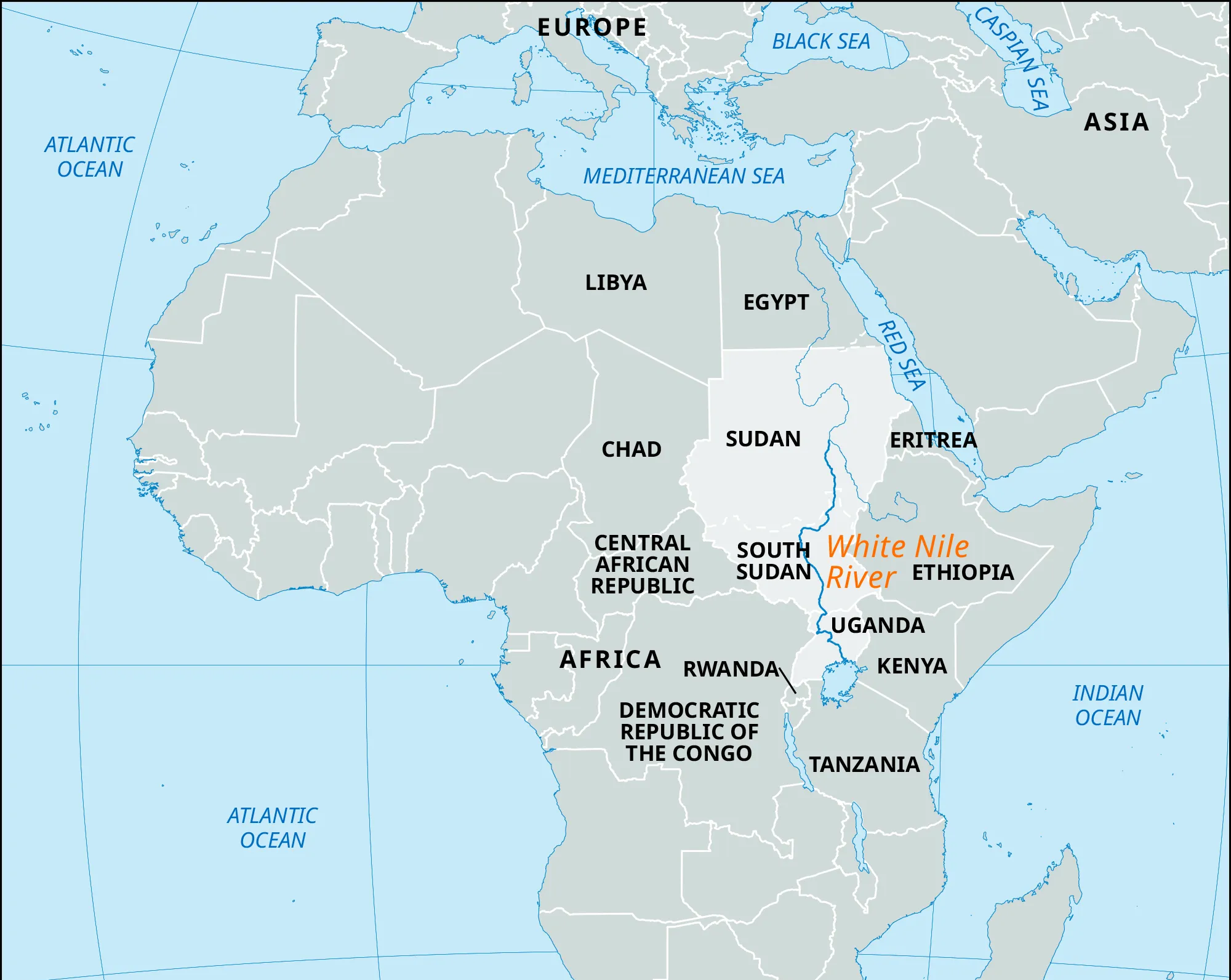Lost Nile Branch Key to Pyramid Construction | 03 Jun 2024
Why in News?
Recently, a study discovered an ancient Nile river branch that helped transport workers and materials to Egypt's pyramids, now buried under modern landscapes.
- Researchers employed technologies including satellite imagery, high-resolution digital elevation data, and historical maps to trace the path of the now-vanished Ahramat Branch of Nile River.
What are the Key Highlights of the Study?
- The revelation of the Ahramat Branch, a previously unknown Nile channel from Lisht (village) to Giza (city), illuminates its crucial role in transporting workers and materials for pyramid construction, offering insight into their geographic and logistical considerations.
- The study shows that natural events such as climate change, tectonic shifts, and human activities, along with environmental factors like desertification and changes in rainfall, have altered the Nile's landscape, and branches over time, impacting the region's ecology and water systems.t.
What are Key Facts About Egyptian Pyramids?
- The pyramids of Egypt are massive, ancient stone structures built as tombs for pharaohs (ancient Egyptian rulers) and important figures during the Old Kingdom (roughly 2700–2200 BCE) and Middle Kingdom periods (2050–1650 BCE).
- There are over 118 identified pyramids in Egypt, but the most famous are the three pyramids at Giza:
- Great Pyramid of Giza: The oldest of the Seven Wonders of the Ancient World and the largest pyramid ever built. It was constructed for Pharaoh Khufu (Cheops).
- Pyramid of Khafre (Chephren): This pyramid appears larger than the Great Pyramid due to its steeper angle and the presence of the Sphinx, a massive statue with a human head and a lion's body, located nearby.
- Pyramid of Menkaure (Mycerinus): The smallest of the three main pyramids at Giza, built for Pharaoh Menkaure.
Nile River
- The Nile River originates south of the equator in Burundi, Africa.
- Flowing northward through northeastern Africa, the Nile traverses Egypt and 10 other African countries, including Burundi, Tanzania, Rwanda, the Democratic Republic of the Congo, Kenya, Uganda, Sudan, Ethiopia, and South Sudan, before reaching its endpoint at the Mediterranean Sea.
- The Nile is formed by three principal streams, the Blue Nile, Atbara which flow from the highlands of Ethiopia, and the White Nile the headstreams of which flow into Lakes Victoria and Albert.
- Nile River, the longest river in the world, called the father of African rivers.
UPSC Civil Services Examination Previous Year Question (PYQ)
Prelims
Q. Consider the following pairs: (2020)
| River | Flows into | |
| 1. | Mekong | Andaman Sea |
| 2. | Thames | Irish Sea |
| 3. | Volga | Caspian Sea |
| 4. | Zambezi | Indian Ocean |
Which of the pairs given above is/are correctly matched?
(a) 1 and 2 only
(b) 3 only
(c) 3 and 4 only
(d) 1, 2 and 4 only
Ans: (c)

